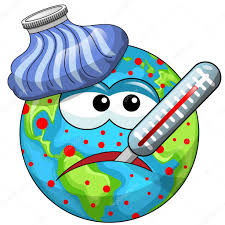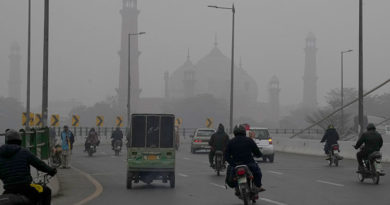HEADLINE: MANILA, Philippines- Department of Health -DOH: Health system choking
LOGO – Philippine’s Department of Health
.
The coronavirus COVID-19 is affecting 218 countries and territories around the world and 2 international conveyances.
.
COVID-19 infection crosses 128.76 million globally as deaths cross 2.81 million.
.
Here is the GLOBAL status as of Wednesday, 7am, March 31, 2021
.

Deaths: 2,802,909:
Recovered: 103,340,601
.
Philippines
The Philippines recorded +9,296 new cases, bringing the total to 741,181 with +5 new deaths, bringing total 13,191 deaths.
.

New cases climb to 10,016, ‘exponential’ surge likely without hard lockdown
.
.
 The country’s health system is “choking,” the Department of Health said Monday, as the Philippines logged a record-high 10,016 new COVID-19 infections even as stringent quarantine restrictions came into effect.
The country’s health system is “choking,” the Department of Health said Monday, as the Philippines logged a record-high 10,016 new COVID-19 infections even as stringent quarantine restrictions came into effect.
.
It was the third straight day when new COVID-19 cases exceeded 9,000, bringing the country’s total number of cases to 731,894.Monday’s tally was the highest daily case count since the pandemic began.
.
.
Meanwhile, health care utilization rates were reaching 63 percent in Metro Manila and 58 percent in Calabarzon, DOH Undersecretary Rosario Vergeire said.
.
Active cases—those being treated or in isolation—continued to climb to 115,495, which was 15.8 percent of the total cases.
.
Of the active cases, 95.9 percent are mild; 2.4 percent are asymptomatic; 0.7 percent are critical; 0.7 percent are severe; and 0.41 percent are moderate.
.
Sixteen new fatalities brought the COVID-19 death toll to 13,186, which is 1.8 percent of the total number of cases.
.
The DOH also reported that 78 persons recovered from the disease recently, bringing the total recoveries to 603,213, which is 82.4 percent of the total.
.
Nationwide, 58 percent of the total ICU bed capacity is in use; 45 percent of the total isolation bed capacity is in use; 45 percent of the total ward bed capacity is in use; and 39 percent of all ventilators are in use.
.
In the National Capital Region, 76 percent of the total ICU bed capacity is in use; 70 percent of the total isolation bed capacity is in use; 59 percent of the total ward bed capacity is in use; and 57 percent of all ventilators are in use.
.
The DOH said Monday the enhanced community quarantine (ECQ) over Metro Manila and neighboring provinces was reimposed to stop active COVID-19 cases from climbing to 430,000 by the end of April.
.
DOH spokesperson Vergeire said projections showed that “further exponential increase [was] likely” if the government did not impose “harder lockdowns or harder measures.”
.
“They said that if we don’t implement immediate and harder measures, we will see 430,000 cases by April 30 nationally and 350,000 cases in NCR alone by the end of April,” Vergeire said in a briefing.
.
The country’s health system is “choking,” she said, as Metro Manila, Bulacan, Cavite, Rizal, and Laguna—the provinces part of the “bubble”—are already at high to critical risk based on the two-week growth rate and average daily attack rate of COVID-19.
.
“Our main objective in implementing stricter community quarantine is for us to have our health system capacity be manageable enough,” she said.Areas in the “bubble” will be under ECQ from March 29 to April 4.
Vergeire said its effects will not be immediately evident due to the incubation period of the coronavirus, which takes up to 14 days.
.
“This ECQ aims to slow down the surge of cases, stop the spread of the variants, allow the health system to recover, and of course, to protect more lives,” she said.
But DOH Epidemiology Bureau director Dr. Alethea De Guzman said the ECQ from March 29 to April 4 will cause cases to “slightly decline but [cases] will increase one week after the end of ECQ.
.
”A projection by modeling tool FASSSTER showed that cases in Metro Manila could still breach 500,000 if it reverts to the “bubble” policy along with Cavite, Rizal, Bulacan, and Laguna after the one-week ECQ.

More than 300,000 of the 721,892 infections nationwide as of Sunday afternoon are in Metro Manila.
.
“That’s why one of the proposals of our experts is maybe we need to extend the ECQ for us to see a continued decrease in cases,” De Guzman said in a Palace briefing.
.
The health official also said the country posted a 126 percent two-week growth rate of COVID-19 cases, meaning infections recorded from March 14 to 27 were two times higher than the same figures from Feb. 28 to March 13.
.
De Guzman urged the public to observe health protocols, seek early testing and isolation after developing symptoms, and cooperate with contact tracers.
.
Defense Secretary Delfin Lorenzana said the government’s decision to place the National Capital Region (NCR) and four other provinces under an ECQ was timely.Lorenzana, who is also chairman of the National Task Force Against Covid-19, said the timing was “just right” as the Inter-Agency Task Force (IATF) was monitoring the spike of new COVID-19 cases.
.
Presidential spokesman Harry Roque, meanwhile, said the ECQ was back because of the emergence of new COVID-19 variants, not because of any failure on the part of the government.
.
“It’s not true that the government has failed,” Roque said in Filipino. “We have been cutting down the COVID-19 transmission until Feb. 22 this year when we were just recording around 1,000 cases per day.
.
But the new variants emerged”The new variants were first reported in the United Kingdom, South Africa, and Brazil.
.
“The new variants are not deadlier, but they are more transmissible, and that cannot be denied,” Roque said.Under the ECQ protocol, non-essential business establishments are not allowed to operate.
.
Dining in restaurants is also not allowed, while curfew has been imposed from 6 p.m. to 5 a.m.The chief of the Joint Task Force COVID Shield said the public was “compliant” on the first day of the ECQ.
.
Lt. Gen. Cesar Hawthorne Binag said the police have 1,112 quarantine control points (QCPs) to secure the NCR Plus bubble.












